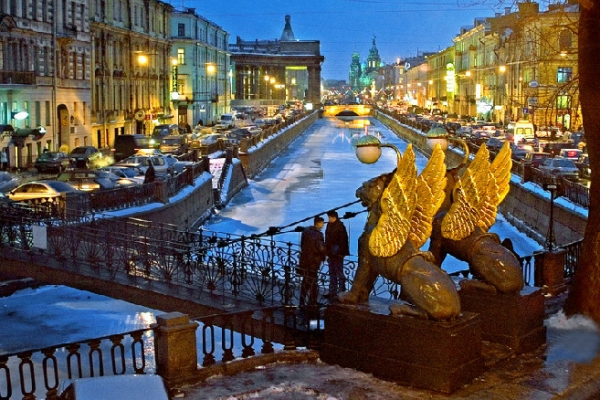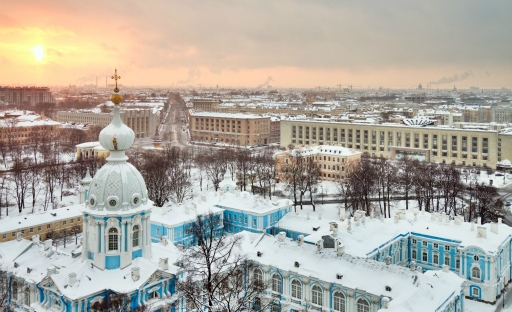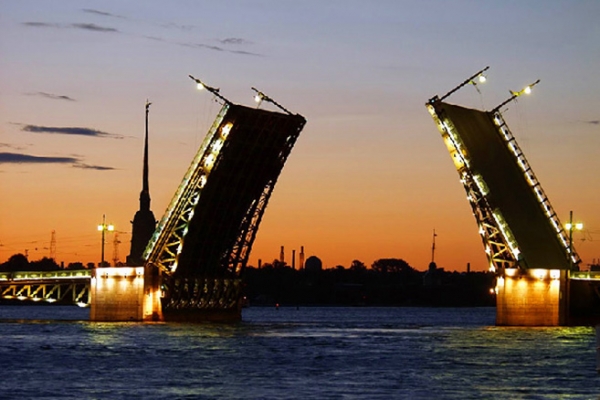Don't miss out on the best jobs!
Subscribe to HelpGoAbroad and weekly we will sent you an email with latest job posts. Provide your email address below
St. Petersburg is the second largest city in Russia next to Moscow, and it is located in the Northwestern corner of the country on the Baltic Sea. It was founded in 1703, but changed names multiple times in the 20th century before settling back in with its current name in 1991. Although St. Petersburg suffered after the World Wars and had a rocky climb back to economic and social stability, the city is now prospering due to its location on the Baltic Sea, making it a major trade city for Russia. Gas and oil companies, electronics, computer software, and heavy machinery manufacturing are only a few of the industries thriving in the city.
St. Petersburg’s location also makes it one of the most accessible cities in Russia, due to its proximity to Europe.
Why Intern In St. Petersburg?
St. Petersburg has long been considered the most “Westerly” city of Russia, and its forward-thinking, democratic stance in the recent political upheavals of the last century have attributed to this. Its location on the Neva River (which runs through the middle of the city and contributes to a large system of Venice-style canals) and the preservation of thousands of buildings in the baroque style give this city an aesthetic appeal as well. Home of Nabokov, Ayn Rand, and Anna Pavlova, St. Petersburg has a long history of involvement in the arts, particularly ballet, and there are over 50 theatres in the city alone. Before the 20th century, St. Petersburg was home of the Tsars and the capitol city of Russia before it moved to Moscow.
Today, St. Petersburg is not only more beautiful in terms of architecture and scenery than Moscow, but is also significantly cheaper (although living in Russia will most certainly not be a budget vacation). There is also a thriving local music and arts scene that has been slowly blossoming over the last decade, and students will find plenty to do outside of the office.
The cities convenient location between the Baltic Sea and the Neva River make it a major trade gateway, connecting inland Russia with the rest of the world. Its proximity to Europe is reflected in the influence the continent had on the lay out of the city, its architecture, and its political beliefs, and that influence is still strong today.
Climate
St. Petersburg’s northerly latitude in conjunction with its location on the coast of the Baltic Sea lends to its temperate climate: warm (not hot) summers with nearly constant daylight and cold, wet winters that coat the majestic architecture in snow for months at a time. Temperatures can drop below zero Fahrenheit, but rise about 90 in the summers.
Spring and fall are the best times to plan your stay to avoid the over-crowded and mosquito-ridden height of summer, but winter is known to be a magical time if snow is your thing. June is famous in St. Petersburg for the “white nights,” when the sun barely dips below the horizon before rising again to begin a new day.
Internship Opportunities in St. Petersburg
There are many websites devoted to connecting students and young professionals with internship programs in Russia. A background in Russian language will put you ahead of other applicants and open up a broader range of programs, but it isn’t a necessary requirement. If you are studying Russian, though, interning in the country is a perfect way to elevate your skills while getting a step ahead in the business world at the same time.
There are a ton of programs in international relations and human resources available to students of those disciplines. St. Petersburg is also known to offer great opportunities in IT and computer programming. If you are pursuing a degree in Russian Language or teaching, you can look into interning to teach English in St. Petersburg.
Internships can either be paid or unpaid, depending on which program you sign up for. Deciding whether you’ll need compensation for your trip or not is totally up to you, but it can be easier to find unpaid internships. Sadly, St. Petersburg is known to be one of the priciest cities in the world, pricier even than Paris and New York, but cheaper than Moscow. Check what your schools policy on internship credits is before you sign up.
Visas
Tourist visas can be obtained from the Russian National Tourist office and are valid for up to 30 days. Study visas, necessary for stays over one month, are issued by the Federal Migration department and can be extended while in the country. Give yourself plenty of time between finding an internship and taking off to apply for a visa, which can take up to two weeks, sometimes more. Internship programs should help guide you through the application process.
Most visas must be acquired from a consulate in your home country. Prices vary from country to country. Citizens of the United States must fill out an extra piece of documentation. Have your passport ready when you apply (which must be valid six months past the date of your arrival).
Russia is a country that has stood alone for centuries. Its relative isolation in the far northeast of the world and its long history of monarchy separate from the development of Europe is fascinating. If you’re looking forward to a degree in Russian language, history, or international relations, visiting the country is a must and interning while you’re there will boost your skills and your resume while immersing you in a way of life outside your norm. St. Petersburg is an aesthetically beautiful and economically relevant city to consider for your internship abroad.
Sign in to publish a comment



Be the first to comment on this post.